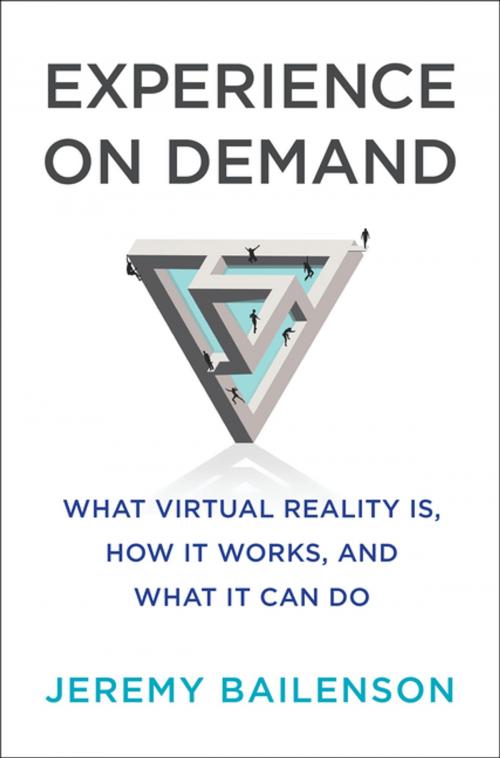Experience on Demand: What Virtual Reality Is, How It Works, and What It Can Do
Nonfiction, Computers, Advanced Computing, Virtual Reality, Science & Nature, Technology, Social Aspects| Author: | Jeremy Bailenson | ISBN: | 9780393253702 |
| Publisher: | W. W. Norton & Company | Publication: | January 30, 2018 |
| Imprint: | W. W. Norton & Company | Language: | English |
| Author: | Jeremy Bailenson |
| ISBN: | 9780393253702 |
| Publisher: | W. W. Norton & Company |
| Publication: | January 30, 2018 |
| Imprint: | W. W. Norton & Company |
| Language: | English |
“If you want to understand the most immersive new communications medium to come along since cinema… I’d suggest starting with Mr. Bailenson’s [book].” —Wall Street Journal
Virtual reality is able to effectively blur the line between reality and illusion, granting us access to any experience imaginable. These experiences, ones that the brain is convinced are real, will soon be available everywhere. In Experience on Demand, Jeremy Bailenson draws upon two decades spent researching the psychological effects of VR to help readers understand its upsides and possible downsides. He offers expert guidelines for interacting with VR, and describes the profound ways this technology can be put to use to hone our performance, help us recover from trauma, improve our learning, and even enhance our empathic and imaginative capacities so that we treat others and ourselves better.
“If you want to understand the most immersive new communications medium to come along since cinema… I’d suggest starting with Mr. Bailenson’s [book].” —Wall Street Journal
Virtual reality is able to effectively blur the line between reality and illusion, granting us access to any experience imaginable. These experiences, ones that the brain is convinced are real, will soon be available everywhere. In Experience on Demand, Jeremy Bailenson draws upon two decades spent researching the psychological effects of VR to help readers understand its upsides and possible downsides. He offers expert guidelines for interacting with VR, and describes the profound ways this technology can be put to use to hone our performance, help us recover from trauma, improve our learning, and even enhance our empathic and imaginative capacities so that we treat others and ourselves better.















